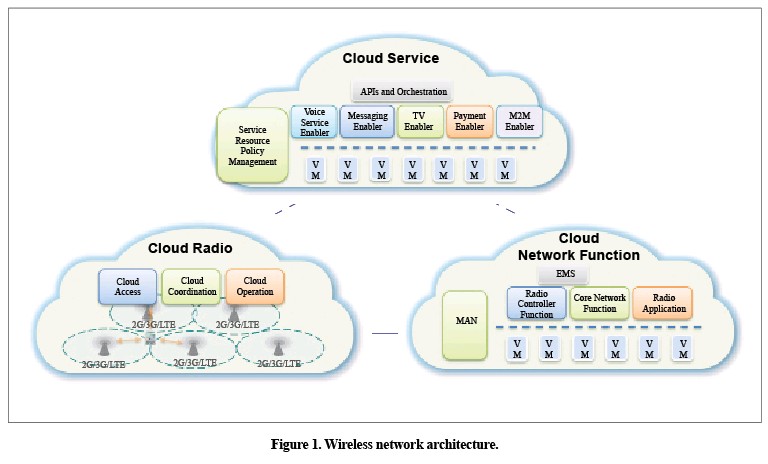Preparing to Embrace the 5G Era
 Industry Expectations for 5G
Industry Expectations for 5G
As 4G wireless technologies mature, research has begun on 5G technology. In terms of architecture, a 5G network will have ultrahigh capacity; it will integrate multiple networks; it will be highly intelligent; and it will use IT and cloud-based technologies. A 5G network will also be energy-efficient. Demand for mobile network capacity is predicted to increase a thousand-fold within ten years.
User demand has also played a part in 5G development. With the proliferation of mobile broadband, users have demanded more in terms of ultrahigh speed, low delay, ubiquitous coverage, and better mobility. In future applications, such as internet of vehicles and smart grid, delay will be less than 1 ms.
5G technologies are needed to deliver many emerging services, such as massive connected devices and wide-range traffic pattern.
5G Research Directions
At present, industry research on 5G is still in its infancy. 5G research will be focused on increasing capacity a thousand-fold, lowering delay to below 5 s, and supporting multiple services, such as MTC, V2V, and D2D. However, the primary goal is achieving a thousand-fold increase in capacity. Another important goal is improving the air interface technology so that 5G networks are highly converged and flexible.
To increase capacity, industry is working hard to expand spectrum, improve spectral efficiency, and deploy dense cells.
- More Spectrum
Allocating spectral resources is the first issue that needs to be solved in the evolution to 5G. Making full use of existing spectrum and planning the spread of spectrum are two important research topics in 5G.
Aggregating spectrum bandwidths according to service demand helps optimize the use of existing spectrum. White-space spectrums below 3.5 GHz are very rare, so future 5G spectrums will have to spread to high frequency bands, such as the range from 5 GHz to 50 GHz.
Static or quasi-static spectrum allocation will gradually be replaced by dynamic spectrum allocation so that base stations and terminals can automatically allocate spectrum according to actual scenarios and service demands. This helps maximize spectrum use. Spectrum sharing and dynamic spectrum allocation are focus points in current research.
- More Effective Air Interface Channels and Higher Spectral Efficiency
Because spectrum is limited, spectral efficiency needs to be improved in terms of
● modulation, demodulation and coding. Efficient modulation, demodulation and coding technologies are essential for wireless communications. There have already been groundbreaking advances in such technologies for 2G, 3G and 4G networks, but even bigger breakthroughs are expected in the 5G era. Even though many 5G modulation, demodulation, and coding technologies are currently being researched, none can satisfactorily replace existing technologies in the short term.
● canceling interference. Another way to increase efficiency is to reduce interference and maximize the capacity of available channels. In 4G, this has proven to be an effective way of increasing efficiency, and it is promising for 5G networks. Multiple coordination technologies will be introduced to eliminate interference within base stations, between base stations, and across the whole system so that overall system capacity is increased.
● space division for spectrum reuse. When it is difficult to improve system capacity through modulation, demodulation and coding, space-division technology is optimal for maximizing spectrum reuse. Massive MIMO is such a technology and is widely recognized in the industry.
● automatic air interface adaptation. Air interface adaptation is another way of developing 5G technology. Future 5G requires a network that can support diverse services, such as high-speed telepresence, highly reliable smart grid, M2M, and D2D communication. These services need different air interface technologies that are adaptable to the unique features and coding modes of the service. Therefore, it is important to make one NE that is adaptable to all these services.
- Dense Cells
Small cells are an important way of increasing the capacity and improving the performance of a mobile network. In the early years, networks were homogeneous, but they now have heterogeneous macro and micro architectures. Dense picocell coverage will be irreversible for 5G networks. Separate high-frequency bands will be allocated to densely deployed picocells; separate thin-carrier channels will be used for macro cells; and ultra virtual cells will also be used.
Future 5G networks will have converged technology; will be designed for optimal user experience; and will incorporate IEEE wireless access and IT technologies. A 5G network will be a smart, converged ICT mobile platform.
ZTE’s Vision for 5G
ZTE believes that cloud-based network architecture, coordinated RAN design, and software-defined multiservice air interfaces are the future for 5G networks. Cloud-based network architecture means core networks and NEs (such as controllers) use network function virtualization (NFV) and software-defined networking (SDN) to integrate hardware system and software-defined functions. Cloud-based RAN uses NFV to provide cloud-based NEs, and it improves the convergence of multiple systems and coordination between multiple networks. Software-defined multiservice air interfaces enable the network to adapt to diverse services using one network or one NE.

- Cloud NF
With its unified cloud telecom platform, ZTE has transgressed the boundary of traditional mobile NEs and has redefined network architecture. According to ZTE, a wireless network architecture comprises three clouds: cloud NF, cloud radio, and cloud service, and these meet the needs of long-term evolution.
Using NFV, cloud NF integrates the functions of mobile core network, controllers, and signaling-based centralized interference suppression. Cloud NF uses virtualization to separate software architecture from hardware architecture and makes all NE functions an organic whole. Cloud NF also uses SDN to separate the forwarding plane of packet gateways from the core network. This improves forwarding efficiency. Cloud NF enables the efficient deployment of 2G, 3G and 4G multilayer networks and accommodates the needs of both legacy and future 5G networks.
- Cloud Radio
Cloud radio includes cloud access and cloud coordination. The key to cloud access is to integrate and optimize independent 2G, 3G, 4G, and Wi-Fi access networks in order to enable vertical multisystem convergence and horizontal three-dimensional coverage by NEs. In this way, end users receive the best data and voice services at any time and in any place. They do not need to know about the specific wireless access mode or differences between wireless technologies. Complicated access authentication is also unnecessary.
Cloud coordination has two core aspects: dynamic adaptation and dynamic seamless coordination. Dynamic adaptation means using multilayer coordination and a resilient bandwidth mechanism to adapt to different bearing conditions. An optimal coordination solution provides suitable transmission regardless of whether the bearer network is based on microwave, SDH, MPLS, or PTN. With this solution, idle bandwidth in the bearer network is utilized to improve wireless performance. The resilient bandwidth mechanism enables good cloud coordination even when the transmission performance of networks fluctuates widely.
- Software-Defined Air Interface
A single air-interface technology is not fully adaptable to all 5G services. Flexible air interface technologies are needed for automatic service adaption and optimal performance. In 2009, ZTE proposed a software-defined air interface in which the hardware architecture at the access side is unified, and specific air interfaces are software-programmed under the unified air interface framework in order to satisfy the requirements of various application scenarios. These scenarios include wireless LAN, high-speed data communication, LTE-Hi, various backhaul connections, varying frequency bands, and M2M communication that supports massive low-rate access terminals. Software-defined air interface technology can be used for 5G evolution but also supports mature 2G, 3G, and 4G access technologies.
Conclusion
5G may not be a brand-new technology. Research on 5G will focus more on user demands and scenario adaptation. 5G will be a smart network that can integrate multiple wireless technologies and automatically define scenarios or configure services as required by the user.
Drawing on years of experience in network deployment, ZTE has made significant contributions on cloud architecture, cloud radio coordination, and multiservice air interface adaptation (SDA) for 5G. ZTE has carried out relevant R&D in these areas. No matter what new technologies are applied in 5G, ZTE’s SDA, cloud radio, and cloud NF solutions will fully support them. 5G is an open ecological system that will allow mobile technology to color our daily lives. ZTE is working closely with its partners to contribute to 5G development.